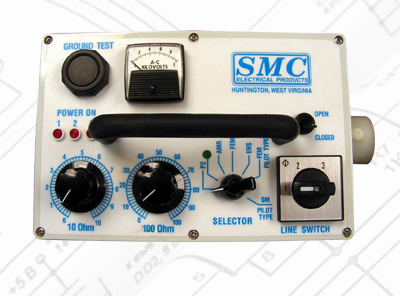 Electricians can use the safety circuit tester to test whether their work has been done correctly when installing electrical wiring. It's also important for the inspection and testing of power supply installations and equipment.
Electricians can use the safety circuit tester to test whether their work has been done correctly when installing electrical wiring. It's also important for the inspection and testing of power supply installations and equipment.
What are the benefits of using this tool?
Many companies use this device to help them comply with electrical codes and regulations. Improper electrical work can cause fires and other safety issues, so having this device available helps to quickly and easily check whether or not your work is safe. Some of the features that it offers are:
Voltage detection: This allows you to check the insulation of your wires more conveniently. It can detect a high voltage from a low voltage. If there is a high voltage, it will immediately alert you.
Continuity testing: You can test for continuity between two points on your wire or cable.
Open circuit testing: This allows you to test for an open circuit on your wire or cable, as well as for continuity between two points.
Short circuit testing: It can ascertain if there is a short circuit between the live and the neutral. Using the continuity option will also tell you whether or not there's a short in your wire or cable.
Test for the earth: The tester can help you determine if there is an Earth connection to your wire or cable.
Continuity buzzer: when you test the wire or cable, it will provide a loud buzzing sound to let you know if there is a short in your wire.
Light indicator: there is an indicator light that will tell you if the wire or cable has power going through it.
You can also use a safety circuit tester on your domestic appliances and switches. It will help you determine if the power source voltage that comes from your wall is safe to use. You can also check power consumption and monitor whether or not your appliances are plugged in properly.
How does one use a safety circuit tester?
You can test the wire or cable two ways: with an open circuit option and with a live line option.
With an open circuit option: The user can test the wire or cable to see if there is an open circuit between two points. If there is, it will provide a buzzing sound, and if not, it will turn off.
With a live line option: The tester will provide a live line between the two points. If you hear the buzzer and it does not turn off, there likely is a short in your wire or cable.
You will need to use a safety circuit tester if you want to ensure that your electrical installation and equipment are safe to use. You should not use a wire or appliance if the circuit tester indicates that it has an open or live line. It's important that you take precautions in your work, so having this device on hand can help you comply with electrical codes and regulations.
If you are looking for additional information, here is the page where you will find a lot of helpful information about the safety circuit tester. If you would like to speak with a team member contact us today!